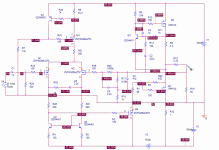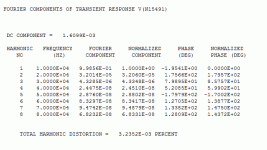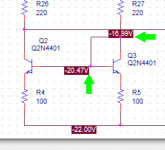I always use jfets or small signal mosfets in the input stage so that I can use the unity gain DC feedback scheme of my choice with reasonable values of coupling film caps.
Take a look at post #19 of this thread to see what I mean.
Feedback capacitor to minimize DC offset
For the schematic shown in this thread, mosfets give better sim results, though it is possible to use Darlintons in the bottom side "fake SIT" output.
Take a look at post #19 of this thread to see what I mean.
Feedback capacitor to minimize DC offset
For the schematic shown in this thread, mosfets give better sim results, though it is possible to use Darlintons in the bottom side "fake SIT" output.
I learned about it in Audio magazine in the late 70's when they did a review of a Nakamichi amplifier. It's been my go-to scheme for unity gain DC ever since.
I just pulled the trigger this morning and ordered 3 sets of boards at PCBway (15 boards, 56 bucks, almost half of that DHL shipping - such a deal). One of those boards will be the next take on my single-ended project described elsewhere in the section, The other two exploit alternate output stage drive schemes - one uses an Aleph-style modulated current source, while the other uses a depletion mode mosfet in a variant of the old White cathode follower circuit. Both will get their day in the sun one I get the boards in and populate them. Both decouple the output bias from the input tail current, unlike the original approach shown here.
How much fun can you have for USD 56.00? Answer: an infinite amount of fun!
Congratulations and best wishes!
MJ
Congratulations and best wishes!
MJ
The Aleph board option will probably be the first I'll build. With a small amount of tinkering to adapt TO-247 devices for the output devices, it could be a Micro-Aleph power amp, watts output TBD.
The circuit shown above is almost completely assembled and will be powered up soon. Gain-phase measurements should prove interesting.
- Status
- Not open for further replies.
- Home
- Amplifiers
- Headphone Systems
- Discrete Headphone Amp.


